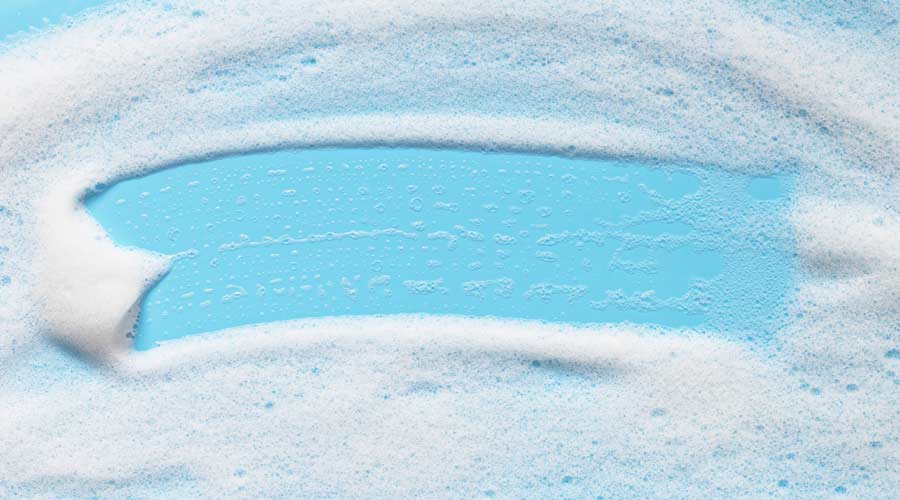
By David Green, CEO and founder of Rediscover Clean
Maintaining a clean environment is not just about aesthetics — it’s a critical factor in preventing the spread of infections in high-traffic public spaces. Areas such as hotel lobbies, hospital waiting areas, office building entrances, and school hallways see constant foot traffic, making them prime locations for germs to spread. Proper cleaning and disinfection protocols in these shared spaces play a key role in keeping guests, employees, patients, and students safe.
Creating the best cleaning practices for infection prevention in public areas requires focusing on key strategies that help reduce risks and promote a healthier environment.
1. The difference between cleaning, disinfecting, and sanitizing
To establish an effective cleaning program, it’s important to distinguish between the three main types of surface treatment. Here is a brief description of all three:
• Cleaning removes dirt, dust, and some germs from surfaces using soap or detergent and water.
• Sanitizing lowers the number of germs to a safe level as determined by public health standards.
• Disinfecting kills most germs on surfaces using chemical solutions designed to eliminate bacteria and viruses.
A comprehensive infection prevention plan should incorporate all three processes, with a strong emphasis on disinfecting high-traffic areas.
2. Frontline defense
Infection prevention efforts should prioritize high-touch surfaces in public areas, as they are frequent points of contact for many individuals. Regular and thorough cleaning of these areas is essential in all settings but possesses certain areas of emphasis.
• Hotels: Lobby check-in counters, elevator buttons, entrance door handles, concierge desks, luggage carts, and seating areas.
• Hospitals: Lobby reception desks, waiting room chairs, entrance doors, check-in kiosks, handrails, and elevator call buttons.
• Office buildings: Reception desks, elevator buttons, conference room tables, door handles, and shared workstations.
• Schools: Hallway lockers, drinking fountains, classroom door handles, handrails, and restroom surfaces.
Using EPA-registered disinfectants and microfiber cloths helps ensure thorough germ removal while minimizing cross-contamination.
3. Choosing the right cleaning products
Selecting the right cleaning tools and products is essential for infection control. Key considerations include:
• Hospital-grade disinfectants: Effective against a broad spectrum of pathogens, including viruses like influenza and COVID-19.
• Electrostatic sprayers: Help evenly distribute disinfectant across large surfaces quickly and efficiently.
• Microfiber mops and cloths: Capture and hold bacteria more effectively than traditional cleaning materials.
• No-touch cleaning systems: Reduce direct contact with contaminated surfaces in restrooms and public areas.
Following manufacturer guidelines for dwell times — the time a disinfectant must remain wet on a surface to be effective — is crucial for maximum efficacy.
4. Hand hygiene is critical
A strong hand hygiene program is one of the simplest and most effective ways to prevent infections. Public spaces should have:
• Hand sanitizer stations at entrances, reception desks, elevator banks, and other key locations.
• Clear signage reminding visitors and staff about proper hand hygiene techniques.
• Frequent restocking of soap and paper towels in restrooms and handwashing areas.
5. Cleaning frequency and scheduling
The frequency of cleaning depends on the level of foot traffic and the risk associated with the environment:
• Hotels: Lobbies and elevator buttons should be cleaned multiple times daily, with deeper sanitation performed overnight.
• Hospitals: Waiting areas and entrance doors require continuous disinfection, particularly during flu season.
• Office Buildings: Shared spaces like conference rooms and breakrooms should be disinfected between uses.
• Schools: Hallways and common areas should be cleaned throughout the day, with special attention during peak seasons for illness.
Establishing a structured cleaning schedule ensures consistency and accountability.
6. Training and compliance are mandatory
A well-trained cleaning staff is the backbone of any infection prevention program. Training should focus on:
• Proper use of cleaning chemicals, including dilution ratios and dwell times.
• Preventing cross-contamination with color-coded cleaning cloths and tools.
• Proper use of personal protective equipment (PPE) such as gloves and masks.
• Compliance with CDC and OSHA guidelines for infection control.
Ongoing training ensures cleaning teams stay up to date with the latest best practices and standards.
7. Technology helps
Emerging cleaning technologies enhance infection prevention efforts. Some notable advancements include:
• UV-C light sanitization: Used in hospitals and some hotels to kill bacteria and viruses on high-touch surfaces.
• Self-cleaning surfaces: Antimicrobial coatings that reduce the survival of pathogens on common touchpoints.
• Smart cleaning sensors: Detect high-traffic areas and alert staff when cleaning is needed.
• ATP testing devices: Provide real-time cleanliness verification, ensuring proper sanitation.
Leveraging technology can help facilities maintain high hygiene standards with improved efficiency.
Infection prevention in public spaces requires a multi-layered approach that prioritizes high-touch surfaces, proper cleaning techniques, and air quality control. Whether in a hotel, hospital, office building, or school, consistent and strategic cleaning practices reduce the spread of harmful pathogens and promote public health.
By investing in proper training, high-quality cleaning products, and innovative sanitation solutions, businesses and institutions can create safer environments for everyone who enters their facilities.
David Green is the CEO and founder of Rediscover Clean, a consulting firm specializing in housekeeping for luxury hotels and healthcare. Focused on four core pillars — Engage, Educate, Validate, and Innovate — Rediscover Clean also represents best in class cleaning solutions and products for the industry.
posted on 4/21/2025

 The Down and Dirty on Cleaning in Virus Season
The Down and Dirty on Cleaning in Virus Season How Surfactant Use is Expanding in Commercial Cleaning
How Surfactant Use is Expanding in Commercial Cleaning Maximize Your Margins: Learn How to Automate Pricing and Track Rebates
Maximize Your Margins: Learn How to Automate Pricing and Track Rebates